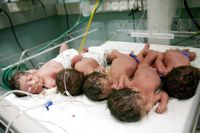Ashfaq Yusufzai
PESHAWAR, Jan 24 2008 (IPS) – Although genetic sequencing tests conducted by the World Health Organisation (WHO) of samples from a man who died of H5N1 avian influenza do not confirm human-to-human transmission, authorities in this region, bordering Afghanistan, are taking no chances.
Ilyas, 28, a livestock official was admitted to the Khyber Teaching Hospital (KTH) on Nov. 22 with symptoms of bird flu and died on Nov. 22. But when it became known that his brother, Idrees, 22, had developed similar symptoms and died four days earlier it sent alarm bells ringing through the community and health officialdom.
On Dec. 28, WHO s headquarters in Geneva announced that a case of human-to-human virus transmission may have occurred in Pakistan, but a later statement on Jan. 3 said that a preliminary risk assessment found no evidence of sustained or community human-to-human transmission .
Meanwhile, KTH had received another three brothers and one cousin; all were tested positive for carrying H5N1 strain of virus.
Initially, the Ministry of Health, Islamabad dragged its feet on the result of the death of Ilyas, despite its confirmation by the National Institute of Health (NIH), Islamabad. The ministry was cautious, fearing that it would cause panic among the people, and pilgrims could face delay in flights to Saudi Arabia for Hajj.
Now it has issued an alert and started training doctors and health workers on the management of bird flu in the province. It has established two respiratory isolation units (RIUs) to cope with an emergency.
Related IPS Articles
The WHO is assisting the health department to establish two RIUs, one each at Peshawar and Abbottabad where six cases and three cases respectively of H5N1 were found, said WHO s Dr Saeed Akbar Khan.
In addition, the world health agency has agreed to establish two wards each at KTH and Ayub Teaching Hospital, Abbotabad in NWFP, at an estimated cost of 500,000 dollars, Dr Mukhtiar Zaman Afridi, a pulmonologist and focal person for bird flu told IPS.
The WHO has urged the health and agriculture departments in the NWFP to coordinate efforts because an estimated 35 percent of the population could be at risk. In case of a pandemic, thousands of people could die, and hospitals, which together have roughly 9,000 beds, would be unable to meet the challenge.
About 14 private rooms designated as the isolation ward are not up to the standard of the world health agency. There is no ventilation and investigation facility, such as x-rays, etc., due to which the affected patients had to be shifted to and from the ward, Dr. Saeed Akbar Khan told IPS.
The global health agency believes the world is closer to another influenza pandemic than at any time since 1968. Last month, its experts flew into Pakistan and visited Peshawar and Abbottabad districts of NWFP where some 200,000 poultry have been culled.
Two teams collected data on the nine bird flu cases reported from the two districts in effort to determine the epidemiological link between them. While one patient died, the rest have recovered.
Dr Khalife Mahmud Bile, WHO s country chief, said the visiting teams had validated the findings of the NIH.
Global health experts fear the virus which has killed 211 people out of 343 infections reported since 2003 could mutate into a form that spreads easily from one person to another, possibly triggering a pandemic that could kill millions.
WHO teams in Pakistan also investigated the possibility of human-to-human transmission in the reported cases. Since 2005, the government has confirmed the deaths of five people from bird flu.
Stocks of Tamiflu, an antiviral drug used for influenza virus, have been rushed to the affected districts to meet any eventuality, said Bile.
Concerned officials warn there is a need to educate ordinary people and health professionals about the risks. Most doctors are afraid of coming into contact with patients infected by the avian influenza.
According to Dr Khalid Khan of the NWFP s livestock department, the virus flourishes in zero temperature. There is a need to inform the people, especially those associated with the poultry businesses, about the preventive steps, he added.
Up to December, Pakistan reported 79 outbreaks of bird flu, the last on Nov. 29 in Murree, Punjab province. Of these, 53 outbreaks involved commercial and backyard poultry.
The NWFP, which houses 85 percent of the country s poultry farms, is introducing a law aimed at protecting people from bird flu, confirmed Shah Rukh Khan, secretary agriculture and livestock department.
Under the proposed legislation the sale of poultry would be permitted only in designated places. Poultry farms not be allowed in residential areas and poultry waste would be compulsorily buried in deep ditches.
Bird flu has crippled the provincial government. An estimated two million dollars has been paid in compensation to poultry owners who have suffered losses.




